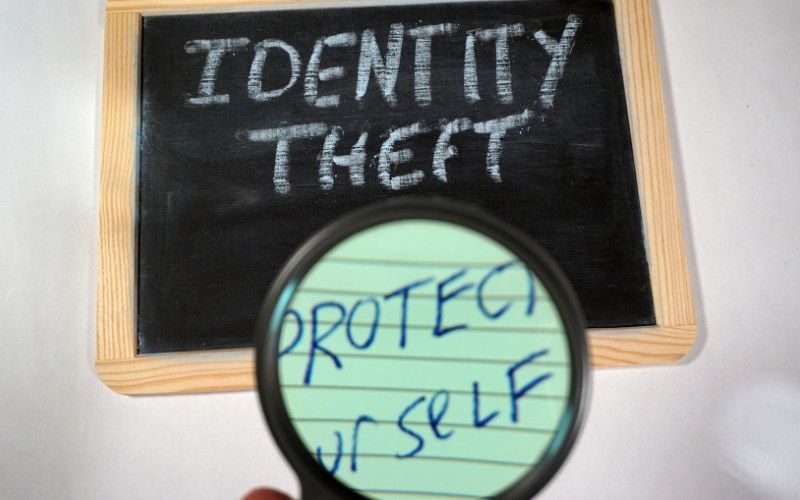Last Updated: April 5, 2024
Your Defense Against Scams and Identity Theft Threats in 2023

Disclaimer: We are not qualified legal or tax professionals and are not giving advice. Always speak with a qualified professional before making any legal or financial decisions.
In 2023, identity theft continues to be a formidable threat, with millions falling victim to sophisticated scams and data breaches each year. From draining bank accounts to fraudulent tax filings, the consequences can be devastating.
But there's hope. By understanding the risks and adopting effective preventive measures, you can significantly safeguard your personal and financial information against cybercriminals.
This guide unveils the most prevalent forms of identity theft today, equipping you with the knowledge and tools to protect yourself and your loved ones from falling prey to these invasive crimes.
If you'd rather speak to a debt specialist now, click here for a free consultation.
Understanding Identity Theft and Scams
Identity theft and scams are growing threats that can disrupt and damage your finances and reputation. In this age of data breaches and sophisticated cybercriminals, it's crucial to understand these risks and take proactive steps to protect your business, employees, and yourself.
What is Identity Theft?
Identity theft involves the unauthorized use of another person's personal or financial information to commit fraud or other crimes. Identity theft is one of the fastest-growing crimes in America, affecting millions of people each year.
Some of the most common forms of identity theft include:
Credit card fraud
Criminals gain access to your credit card number and make fraudulent charges. This is one of the most prevalent types of Identity theft.
Medical identity theft
Thieves use your name and health insurance information to obtain medical services or prescription drugs. This can impact your medical records and insurance rates.
Criminal identity theft
Someone who is arrested gives law enforcement your personal information instead of their own. You could receive warrants or fines meant for the imposter.
Child identity theft
Using a child's Social Security number, thieves apply for government benefits, credit cards, or utilities in the child's name. Often this theft goes undiscovered for years.
Tax identity theft
Imposters file a fake tax return in your name and collect your refund. You won't know until your own legitimate return gets rejected.
Synthetic identity theft
Fraudsters combine real and fake information to create a new phantom identity, using it to open credit cards and drain customer's families' funds.
According to the Identity Theft Resource Center, over 14.5 million Americans were victims risk of identity theft in 2021. As data and security breaches proliferate and criminals grow more sophisticated, the risk of these worrying statistics continues to rise.
What are Scams?
In addition to outright identity theft, elaborate scams pose another serious threat. Scammers use deception, pressure tactics, or technological tricks to manipulate you into giving up personal information or money.
Some prevalent scams to watch out for include:
Phishing scams
Phishing scams often increase around the holidays and tax season with fraudulent emails and sites pretending to be charities, e-card sites, gift exchanges, and tax preparers. Learn how to avoid common holiday scams and identity theft tactics.
Phone scams
Callers impersonate government agencies, tech support, or loved ones in need of money. They pressure and deceive victims into revealing sensitive data.
Email scams
Spoofed emails with infected links or attachments aim to infect your device to steal information for identity theft.
Online shopping scams
Fake websites trick shoppers, customers, or employees into entering payment information, or scammers sell nonexistent goods and services.
Romance scams
Con artists build online relationships to eventually ask for money or personal details from smitten victims.
Tech support scams
Scammers pretend to be Microsoft, Apple, or other tech support reps to gain remote access to your computer and data.
IRS scams
Callers threaten to arrest for overdue taxes that you don't actually owe, trying to scare victims into immediate payment.
Now that you know the scope of risks from identity theft and scams, it's time to learn how to protect yourself. Keep reading for warning signs, and identify prevention tips and steps to take if you do become a victim. Knowledge and vigilance are your best defenses.
How Identity Theft and Scams Occur
To properly safeguard and collect information about yourself, it helps to understand the variety of ways identity thieves and scammers gain access to personal information and execute their crimes.
Some of the most common methods include:
Data breaches
Massive security breaches at companies like Equifax, Yahoo, and many others expose private data such as Social Security numbers, birthdates, addresses, and even passwords. Criminals exploit this leaked info.
Lost or stolen wallets, mail, and documents
If a thief gets their hands on your wallet, paperwork, or cards containing your details, they can easily commit identity fraud.
Mail and mailbox theft
Fraudsters divert your mail or steal it from your mailbox to get account statements, tax returns, or other sensitive materials.
Public WiFi exploits
Hackers positioned near you on an unsecured wireless network can intercept everything you do online, including account logins and financial transactions.
Skimming devices
Hidden devices attached to payment terminals, gas pumps, and ATMs copy credit/debit card information for cloning and theft.
Social media oversharing
Too much personal info on social platforms provides criminals with ammunition for social engineering scams and security question resets.
Weak and reused passwords
If any one of your reused passwords is exposed in a breach, fraudsters can access many other accounts - email, financial, etc.
Scam emails and texts
Deceptive links and attachments trick users into entering info on fake sites or install malware to harvest data from devices.
Malware and viruses
Downloading infected software gives criminals a backdoor into your system, letting them install keyloggers, grab screenshots, and steal sensitive files.
SIM card swapping
By hijacking your mobile number, thieves bypass two-factor authentication and account lockouts to drain online accounts.
This wide range of threats means diligently monitoring your accounts and credit reports is essential. If criminals do get a foothold through any above methods, you need the ability to spot it quickly.
Signs You May Be a Victim
According to the Federal Trade Commission, over 2.8 million Americans reported being victimized by fraud in 2021, translating to billions in losses. Finding out you're the victim of fraud is never pleasant, but the sooner you can detect it, the less damage will be done.
Keep watch for these common red flags:
Accounts or charges you don't recognize
Review account statements closely. Identity thieves often start small with small charges to test stolen card numbers or account access.
Credit report changes and score drops
Unexplained hard inquiries, new accounts, or late payments indicate potential Identity theft. Monitor reports frequently, as identity theft can significantly harm your credit score if not addressed swiftly.
Bills and statements stop arriving
Missing bills may mean thieves have redirected your mail and changed contact info to hide fraud.
Debt collection calls for unknown debts
Scammers open accounts or businesses to collect them in your name and then skip out on payments or collect them. You'll get stuck with collection hassle.
Loan/credit denials
Lenders denying you due to your credit report likely reflects current or past fraud you're not yet aware of.
IRS audit letter
Receiving a notice about false tax filings means a scammer stole your Social Security number and collected your refund.
Medical bills for unknown services
This signals someone is improperly using your health insurance by impersonating you at doctors' offices.
Immediately investigating these red flags limits the fallout and makes recovery much smoother. Reporting identity theft promptly also legally obligates companies responsible for halting additional damage.
Reporting Identity Theft and Scams
If you suspect you or your family are the victim of identity theft, scam, or other fraud, taking quick action is critical to minimize or mitigate the impacts and restore your good standing.
Follow these steps:
- File an identity theft report and recovery plan at IdentityTheft.gov. This FTC-managed site guides you through each step of the process and generates helpful letters.
- Notify your banks and credit card companies of unauthorized charges. Request replacement cards and new account numbers to prevent further misuse.
- Place a free 90-day fraud alert on your credit reports through one of the three bureaus—Equifax, Experian, and TransUnion. This flags suspicious activity on your credit file requiring verification.
- File identity theft and fraud reports with your local police department and keep copies. Authorities can investigate crimes using these filings.
- Report tax identity theft to the IRS Identity Protection Specialized Unit at 800-908-4490. They can help verify your identity and prevent further fraudulent tax returns.
- Contact health insurers and medical providers regarding medical identity theft to prevent errors and false claims on your health records.
- Report scams to the FTC and platforms like Facebook or Google where you encounter them to help warn others and trace criminals. Be aware of online and phone financial scams and protect yourself.
- Monitor your credit reports and financial statements moving forward to ensure new fraudulent accounts stop appearing. Extended fraud alerts last 7 years.
- Consider enlisting an identity theft protection service for extra assistance in managing communications, documentation, and credit monitoring.
The more swiftly you can report fraud across all impacted institutions, the faster you can contain damage and restore your accounts and credit. Don't let embarrassment or uncertainty delay taking action.
12 Ways to Prevent and Protect Yourself
While nothing is foolproof, consistently following sound privacy and security practices dramatically reduces your risks of fraud.
Here are 12 tips:
Lock down personal info offline and online
Share details only when absolutely required, shred documents, use billing aliases, and limit social media oversharing.
Freeze credit reports
With Equifax, Experian, and TransUnion. This restricts access to your credit file, blocking thieves from opening new accounts. Temporarily lift freezes when applying for credit.
Set account alerts and notifications
Get notified of charges over a limit, new payees, logins from newly connected devices, and other unusual activity on all financial accounts.
Monitor financial statements routinely
Carefully review credit card, bank, and investment statements monthly to spot unauthorized transactions early.
Use credit/debit cards cautiously
Shop only on secure networks, avoid shady sites, shield PIN entry, and check out as a guest when possible. Set low daily purchase limits.
Shred identifying documents
Shred credit card offers, bank statements, medical forms, and anything containing your personal details before disposal.
Protect your SSN
Give out this number only when absolutely mandatory, and ask how it will be secured. Keep your SS card stowed securely.
Use strong unique passwords and a password manager
Reused, weak passwords are risky. Use randomly generated 12+ character passwords with a trusted password manager app.
Secure smartphones, computers, and WiFi
Use screen locks, current antivirus software, and VPNs when on public networks, and avoid oversharing on social network media.
Recognize and avoid scam calls, emails, and texts
Do not trust unexpected requests for info or links and attachments. Initiate contact using official channels.
Only shop on secure networks and sites
Stick to well-known retailers. Web addresses should start with “https://” and display a padlock icon.
Maintain privacy on social media
Use strict privacy settings. Never give permission to post full birthdays, addresses, or other personal details publicly.
FAQs
Conclusion
Identity theft and elaborate scams are growing threats impacting millions each year, but there are many precautions you can take to minimize your risks. Safeguard personal information, monitor credit reports and accounts, use strong passwords, recognize scams, and implement prevention habits like credit freezes.
If you do become a victim, act swiftly to report it and contain the damage. Initiate fraud alerts, inform relevant institutions, file police reports, pay attention and carefully watch for any additional signs of misuse. Consider enlisting an identity theft protection service to help manage the recovery process.
While staying vigilant may seem exhausting, establishing good financial hygiene habits will ensure they become second nature. Just like your physical health, tending to your financial well-being should be part of your regular routine. Take advantage of free credit reports and monitoring tools.
No one can completely eliminate the chances of fraud in the modern world, but following the recommendations in this guide will help you avoid being an easy target. Think carefully before sharing your sensitive information anywhere, take advantage of security tools, and keep a close eye on your accounts. Report any red flags immediately.
With smart preventive actions and quick response prevention systems, if incidents do occur, you can effectively mitigate and minimize risks and frustrate fraudsters looking for easy prey. Stay one step ahead!
If you are struggling to deal with overwhelming debt and want to explore your relief options, Pacific Debt Relief offers a free consultation to assess your financial situation. Our debt specialists can provide objective guidance and resources to help find the right debt relief solution.
*Disclaimer: Pacific Debt Relief explicitly states that it is not a credit repair organization, and its program does not aim to improve individuals' credit scores. The information provided here is intended solely for educational purposes, aiding consumers in making informed decisions regarding credit and debt matters. The content does not constitute legal or financial advice. Pacific Debt Relief strongly advises individuals to seek the counsel of qualified professionals before undertaking any legal or financial actions.
✔ Accredited by Better Business Bureau with BBB A+ rating (4.93 rating and 1678 reviews)
✔ US News and World Reports and Bankrate ranked Pacific Debt Relief as one of “The Best Debt Relief Companies of 2024”
✔ 6.9 star rating by BestCompany.com (over 2379 client reviews)
✔ 4.8 star rating by TrustPilot based (over 1613 verified consumer reviews)
✔ ConsumerAffairs.com Accredited (over 544 verified reviews with an average rating of 5 stars)
✔ A Top 10 Rated Compan by TopTenReviews.com , ConsumersAdvocate.com and Top10debtconsolidation.com
✔ 4.6 star rating by Google (229 client reviews)
✔ 100% rating by SuperMoney (9 client reviews)
Reduce Your Credit Card Debt By Up to Half

BBB Reviews | 4.9/5.0 Rating









 Do Not Sell My Personal Information
Do Not Sell My Personal Information